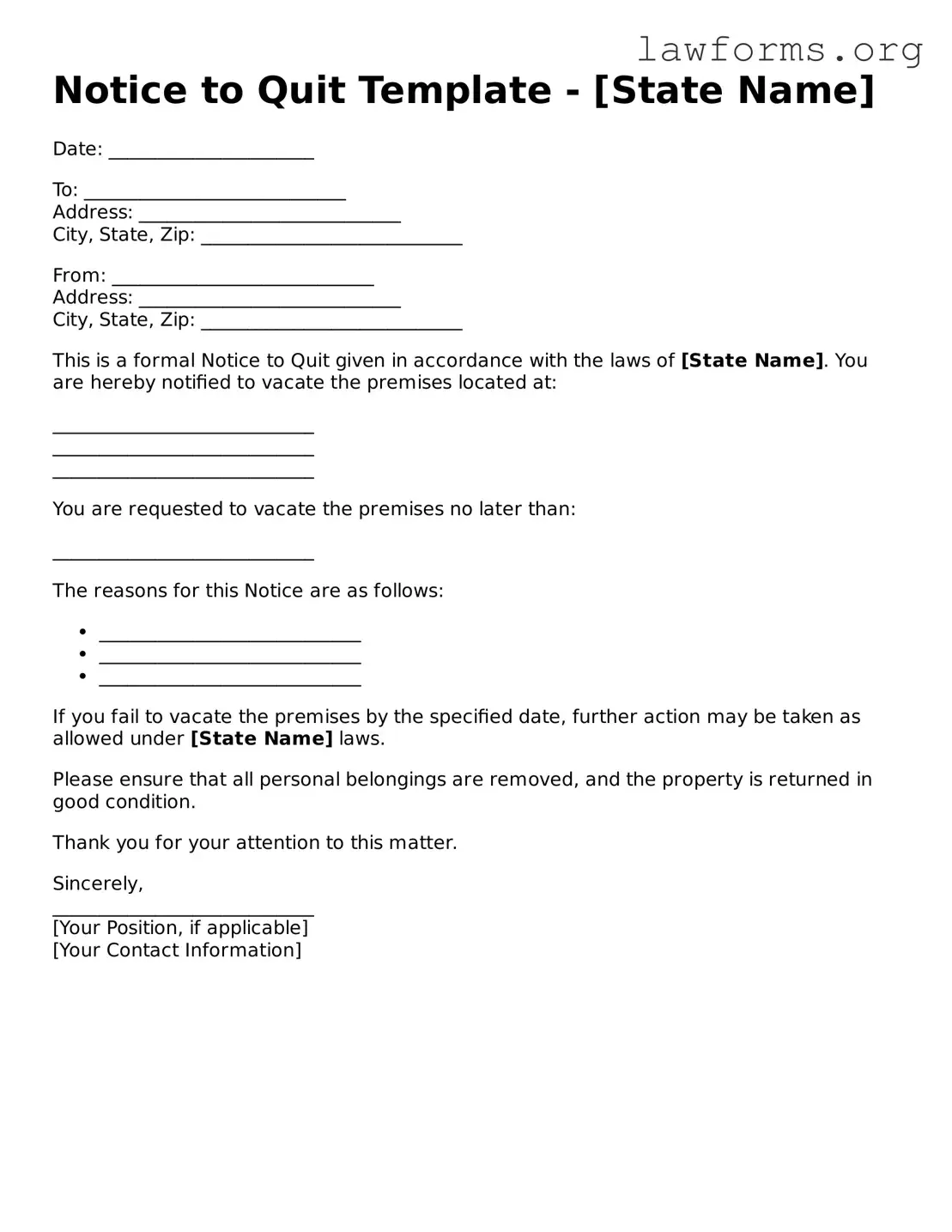Notice to Quit Template - [State Name]
Date: ______________________
To: ____________________________
Address: ____________________________
City, State, Zip: ____________________________
From: ____________________________
Address: ____________________________
City, State, Zip: ____________________________
This is a formal Notice to Quit given in accordance with the laws of [State Name]. You are hereby notified to vacate the premises located at:
____________________________
____________________________
____________________________
You are requested to vacate the premises no later than:
____________________________
The reasons for this Notice are as follows:
- ____________________________
- ____________________________
- ____________________________
If you fail to vacate the premises by the specified date, further action may be taken as allowed under [State Name] laws.
Please ensure that all personal belongings are removed, and the property is returned in good condition.
Thank you for your attention to this matter.
Sincerely,
____________________________
[Your Position, if applicable]
[Your Contact Information]
